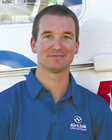
It seems like just a few weeks ago we were soaking up the rays of the sun, but now with cooler temperatures upon us…
the snowflakes are beginning to fly. Central Oregonians relish the variety of activities winter has to offer, so before heading out to enjoy the snow, be sure you are well prepared for the cold weather. Consider the following safety tips:
1. Leave your itinerary: When planning any trip into the snow, leave a hard copy or text your itinerary to a friend or loved one. Make sure it includes your route, time schedule, names of traveling companions, contact methods and an estimate of how long your supplies will last.
2. Develop a rescue plan: Think about what you would do if a member of your party broke a leg, had a medical emergency or experienced equipment failure (ski, binding, boot) and take the appropriate provisions.
3. Check the weather: Make sure you know what to expect before heading out; storms can sneak up on you and cause disorientation in the outdoors.
4. Test your limits: Try to spend a night out in the snow, use your own backyard for a test, and see what you would need to survive the night comfortably.
5. Bring the essentials: Don’t leave home without the following:
• map
• compass
• sunglasses/sunscreen
• extra clothing
• headlamp/flashlight/extra batteries
• first-aid supplies
• fire starter
• matches
• knife
• extra food
• blanket
• large trash bags for use as a rain poncho, ground cover, etc.
Additionally, if you are dependent upon medications, require glasses, etc., make sure you bring extras with you before you head out.
6. Be a buddy: The Cascade snowpack hides a lot of dangers, especially tree wells, fumerals (i.e., steam vents) and other natural hazards. Ski, sled and explore with one or more partners within sight and sound to reduce your risk of injury or death.
7. Watch for avalanches: When skiing at a resort, stay in-bounds. When skiing outside of a resort or in the backcountry, be aware of the avalanche danger. The Central Oregon Avalanche Association has established a forum for sharing snow pack and avalanche conditions within the area, and avalanche forecasting is available for the Mt. Hood area (www.nwac.us) as well. The association holds free “know before you go” classes, or you could also take an avalanche class locally through COCC, Three Sisters Backcountry and Timberline Mountain Guides, or you can contact one of the local sports stores (REI, Pine Mountain Sports, etc.) for additional training events.
8. Carry a beacon: For avalanche safety during skiing, know how to use your beacon and make sure others in your party know how to use theirs. You can practice at the free beacon park at Mt. Bachelor. Additionally, you should also consider carrying a snow shovel and avalanche probe.
9. Know the signs: Understand and watch for signs of mild hypothermia—mumbles, stumbles, fumbles and shivering. Take action as soon as mild symptoms appear, and help members of your party warm themselves by eating, adding layers of clothing and performing light physical activity. Replace any wet insulation with dry insulation as soon as possible.
10. Keep kids safe: Watch your children for signs of mild hypothermia, as listed above, and bring lots of extra clothes, gloves, etc., for layering and changing when items get wet.
11. Guard your dogs: Dogs are affected by winter weather conditions as well, and can get cuts on the bottoms of their paws from the ice. Watch for blood marks, and consider using protective gear for their feet as well as providing an additional layer of warmth and extra food.
12. Protect your head: Wear snow sport helmets. Head injury is the most common cause of death in children riding snowmobiles1. Further, studies suggest skiers and snowboarders who wear helmets have a 35 percent reduction of head injury risk2. Use your head… and protect your noggin!
13. Plan for refueling: Bring extra food and plenty of water. Most people don’t like drinking cold water when they are already chilled, so bring a container with a hot drink like tea, hot chocolate or cider.
14. Think things through: Make sure you think through your plans before going off trail, staying out after dark, etc. Have fun…but plan well so you (and your kids and pets) come home safe and sound.
Matt Crawford – Flight Paramedic.
After being heavily involved with the local search and rescue team and participating in mountain rescue for about 11 years, Matt’s move to AirLink was a natural progression. Born and raised in Corvallis, Matt received his paramedic degree from OHSU/OIT and has lived in Central Oregon and worked with Redmond Fire for the past four years. Committed to the medical needs of his patients, Matt appreciates AirLink’s extremely high standards for care and safety. When he’s not out flying, Matt enjoys playing outdoors via back country skiing, alpinism, running and cycling.
1Decou JM, Fagerman LE, et al. Snowmobile Injuries and Fatalities in Children. Journal of Pediatric Surgery 2003 May; 38(5):784-87
2Russell K, Christie J, Hagel BE. The Effect of Helmets on the Risk of Head and Neck Injuries Among Skiers and Snowboarders: A Meta-Analysis. CMAJ 2010;182(4):333-340.





